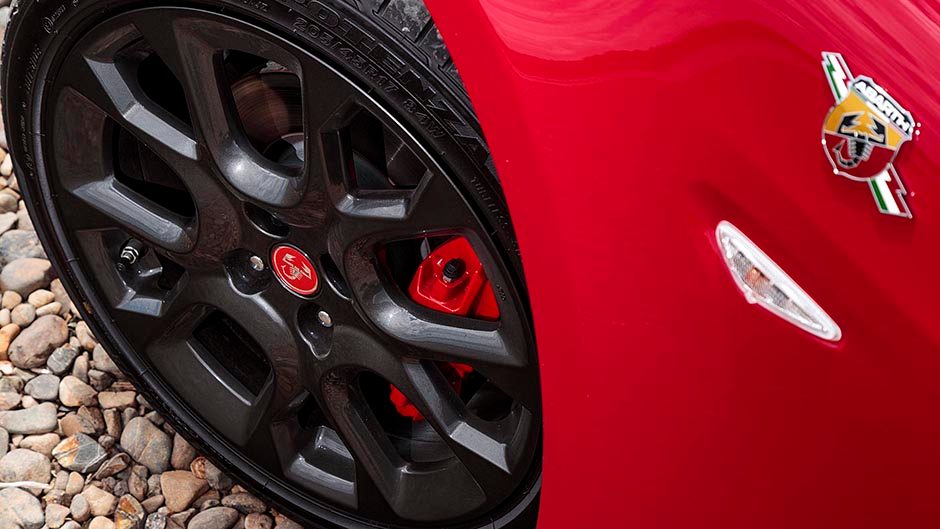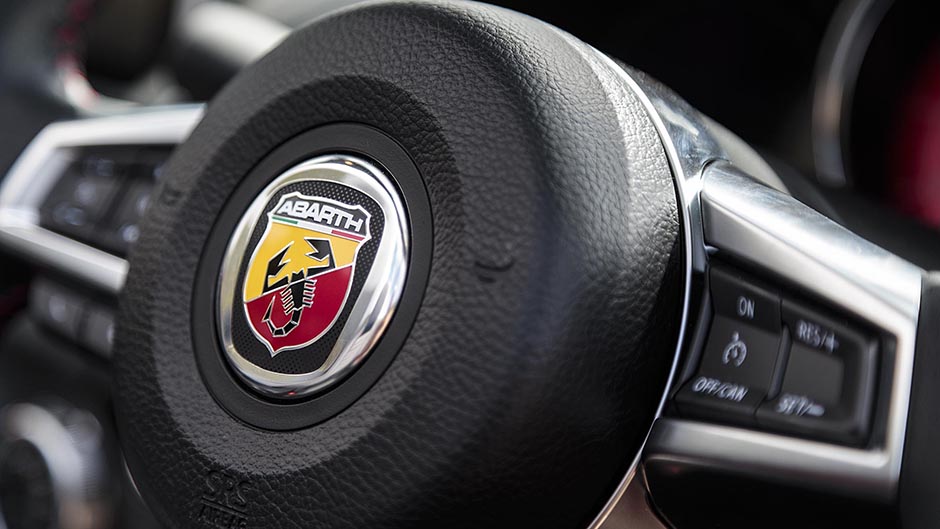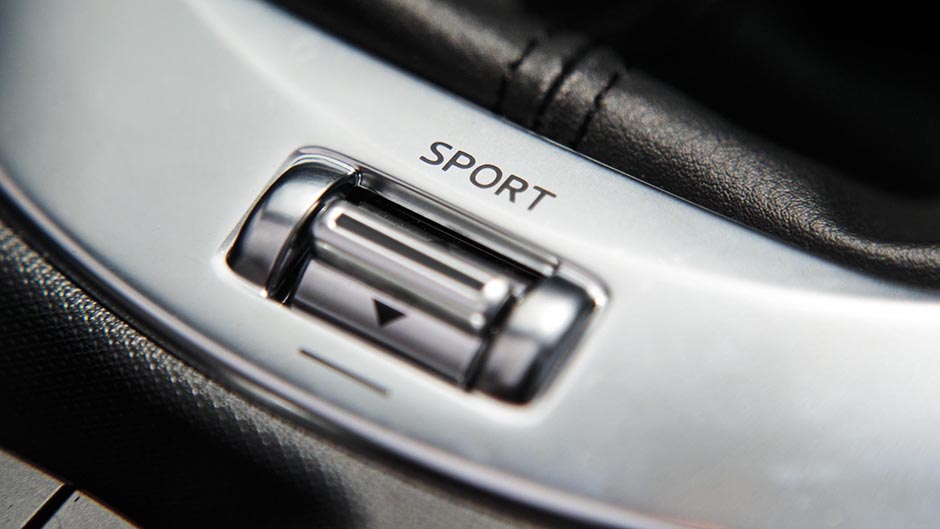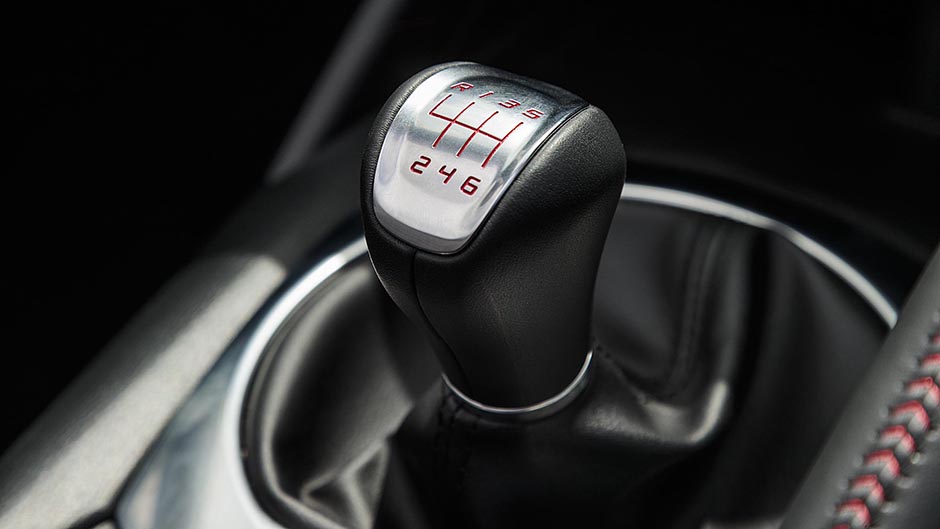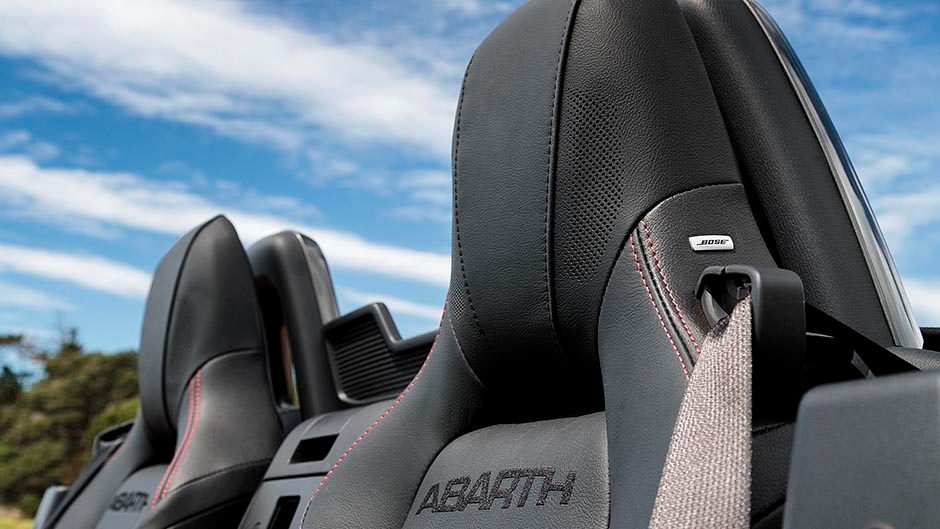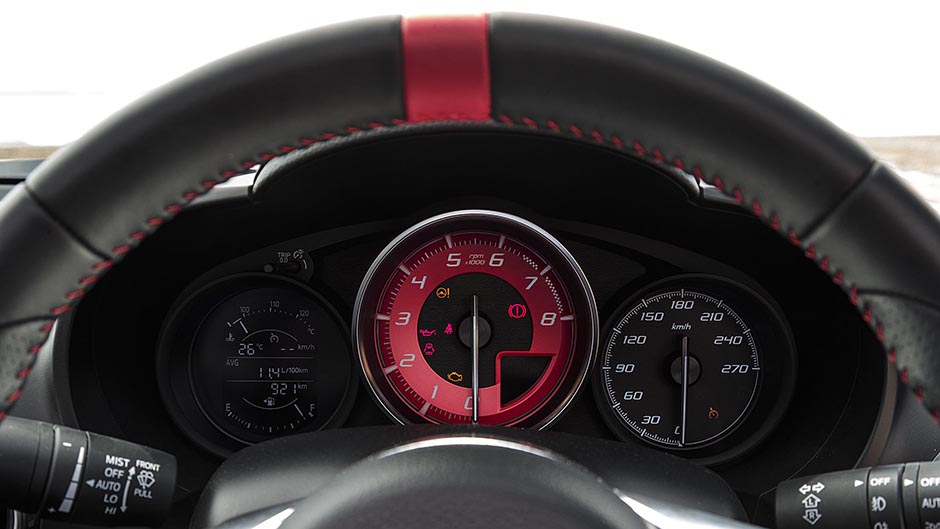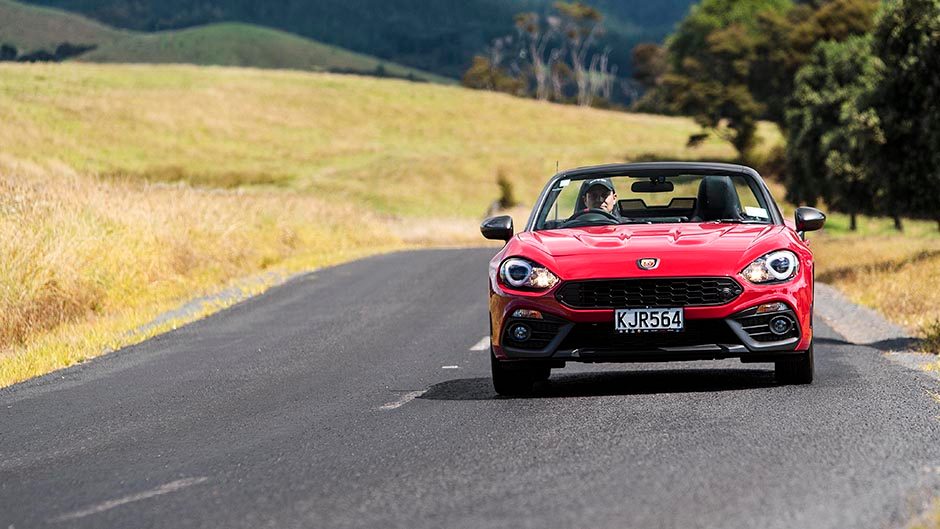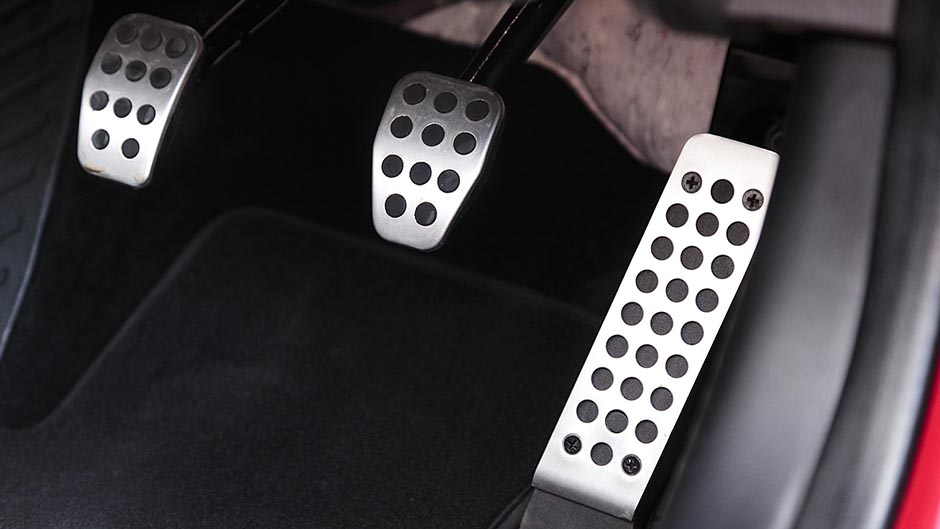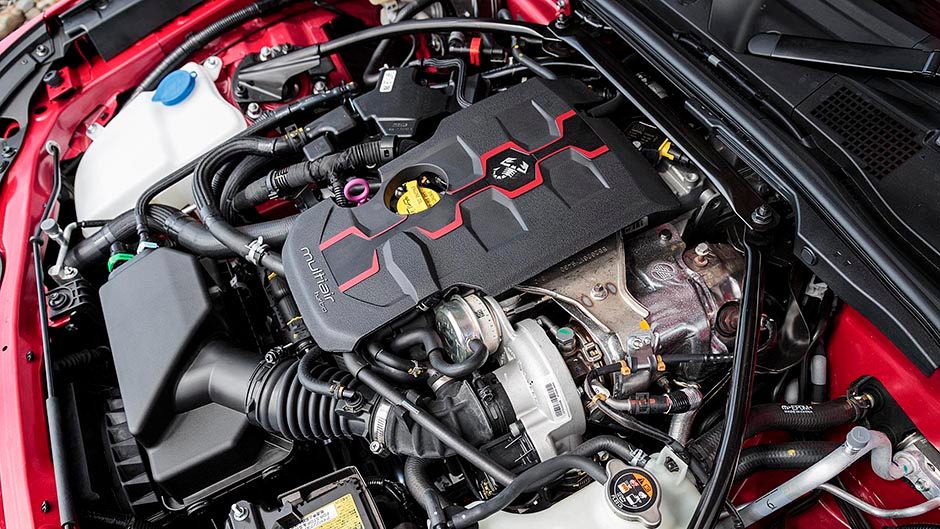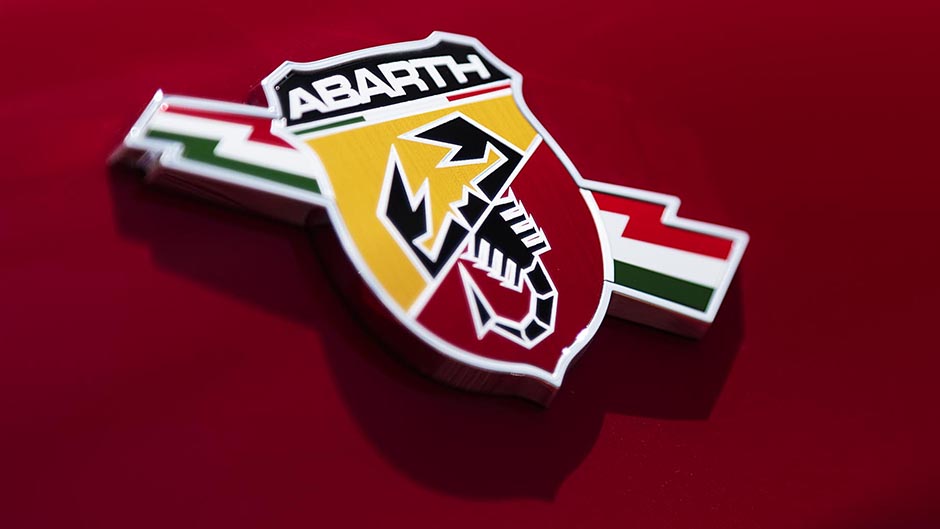2017 Abarth 124 Spider review
Words: Kyle Cassidy | Photos: Tom Gasnier
It’s difficult to drive the new abarth 124 spider and not ponder its fraternal twin, the Mazda MX-5. FCA and Mazda collaborated on development costs to produce the MX-5 and the resulting 124.
Fun-to-drive but impractical roadsters don’t make for a happy business case, but the sharing of costs between these two non-traditional partners and competitors worked here.
The 124 is essentially an MX-5 underneath; both are made in Japan on the same line, but there are differences, the styling being the most apparent with nearly every body panel unique. The 124 gained attention in the car park, one passer-by commenting that it looked a bit like an MX-5. Funny that. It appears bigger than the Mazda, longer actually, with more hanging off the front and rear ends. It’s a more butch look perhaps to appeal to American large and incharge tastes.
There are other differences too, the engine for one, suspension settings, and the price. The 124 uses Fiat’s own 1.4-litre turbocharged four, and in Abarth form this makes 125kW, up a few units over the regular Fiat 124 (which isn’t being offered here) thanks to the standard fitment of a freer flowing sports exhaust.
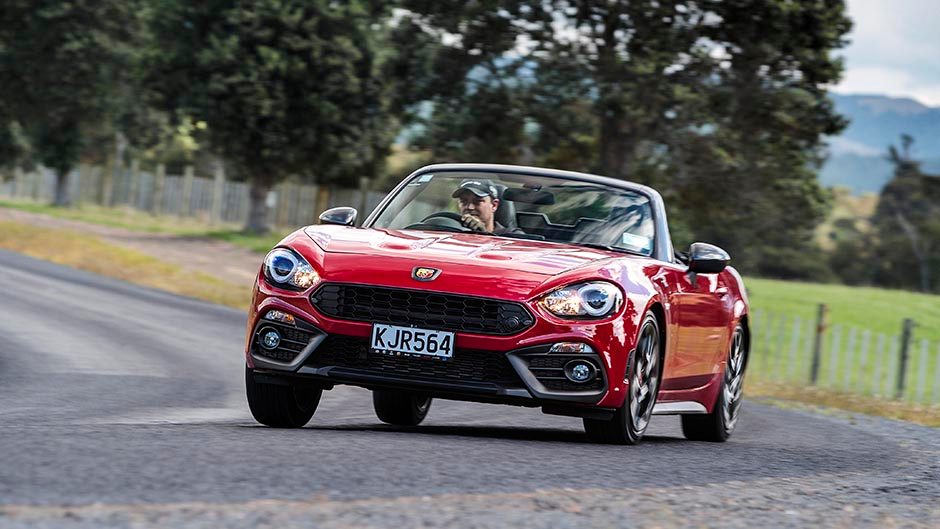
The power count is only marginally higher than the MX-5 2.0-litre (118kW) but a bigger difference over the naturally aspirated mill is the torque production, the turbocharger delivering 25 per cent more with 250Nm streaming at 2500rpm. So does it make for much stronger performance?
Well certainly not until you flick the 124’s Sport mode button; it’s downright lethargic without it. Fiat claims a 0-100km/h time of 6.8sec, which does prove difficult to replicate. An excess of revs causes the rears to spin for too long, and too few has the turbo engine bogged off the mark. We managed to squeak one run under seven seconds but it was almost a fluke, and it’s therefore no quicker than the easier to launch MX-5 (dial in plenty of revs, pop the clutch and you’re gone).
It’s closer between the two over the 80-120km/h run however, separated by just a tenth. The 124 is a tad heavier than the MX-5 which effectively negates any power advantage. The 124’s torque starts to taper off as you round past 3500rpm, and so a few revs are required to keep it steaming along, though it’s not the sweetest spinner ever, running out of legs as most small capacity turbos do once peak power is tapped at 5500rpm.
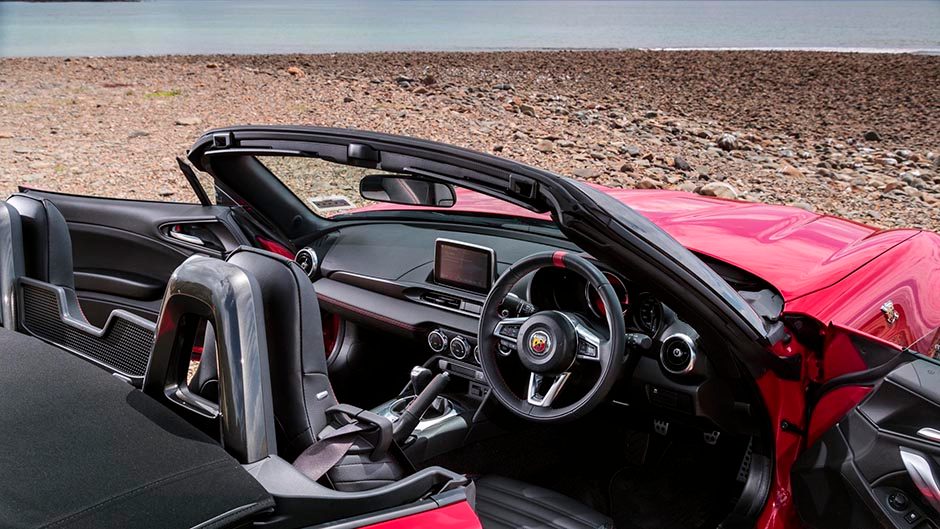
The fuel use claim is 6.4L/100km but, as with any turbo, excess revving and drinking go hand-in-hand, rising to 14L/100km at one point (the MX-5 rarely breaks into double digits when lashed) before settling into the tens, which is around two litres per 100 worse than our experience with the MX-5. Where the powerplant does shine, however, is round town.
While there is some lag, it lugs well from lower revs, and feels right perky anytime there’s more than 2500rpm on board. Another divergence is in the suspension tune where the springs, dampers and roll bars are noticeably stauncher. The ride is more European, firmer and less tolerant of bumps. It’s not too bad on city roads though, the firmness more apparent at speed.
Where the MX-5 glides over back roads, you feel the imperfections along the way in the 124 but there’s less roll in the bends. Where the MX-5 likes to lean into curves, the Abarth is quicker to get set and slice through. That sense of balance is present, the lean mass easy to control and there’s grip to exploit while the rear is nicely rotated by an early application of power. However without pointing both the Mazda and Abarth through the same bend back-to-back we can’t really tell if one has ultimate cornering prowess over the other. The two wear the same sized rubber but different types, the Abarth on Bridgestone RE050s and the MX-5 on S001s.
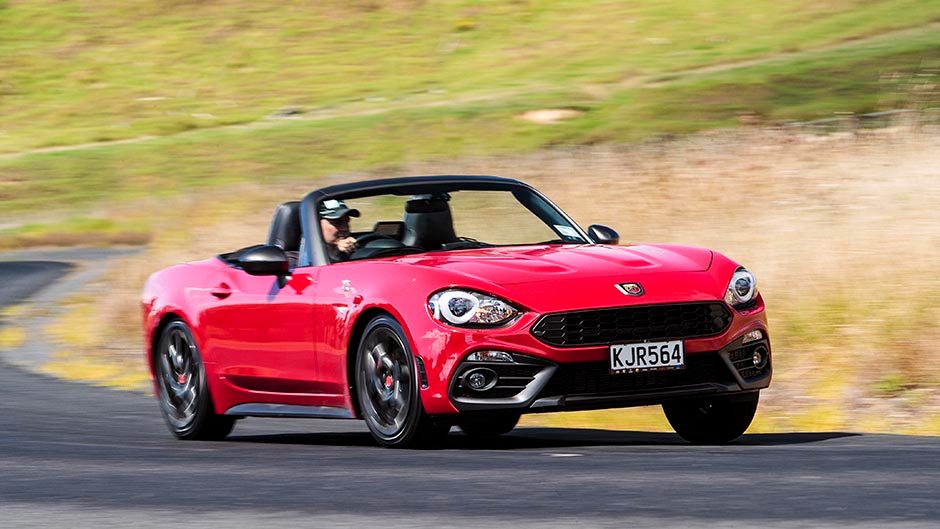
The Abarth’s ESP can disrupt the flow through curves, so it’s best stepped back a notch with a press of the button. Like the powertrain, the steering too is better in Sport mode with a little more weight to help out in faster turns, and there’s no odd weighting or centring and enough feel to help you ace those corners. A further technical difference is the gearbox, the Abarth using the previous generation NC MX-5’s six-speed to handle the added torque. It still has a short and precise action, but is not quite as fluid as the MX-5’s, and the gear lever is an odd shape too.
The one blot against the set-up is under hard braking where the Abarth squirms around at the rear, causing a need for a slight steering correction to pull it back steady for the bend. It adds a little drama to the drive, which is otherwise utterly enjoyable, especially top down on a sunny day. There are few differences inside between the two, a reddish-pink tacho dial, some added soft plastics on the door trim, and a different feel to the steering wheel.
The seats are uniquely trimmed but like the MX-5’s lack for decent lumbar support. The infotainment is all the same, save for the start-up screen, but the Abarth does get a reversing camera as standard and blind spot monitoring. There’s precious little cabin storage but there are novel cupholders and the roof mechanism is simple, quick and easy to work.
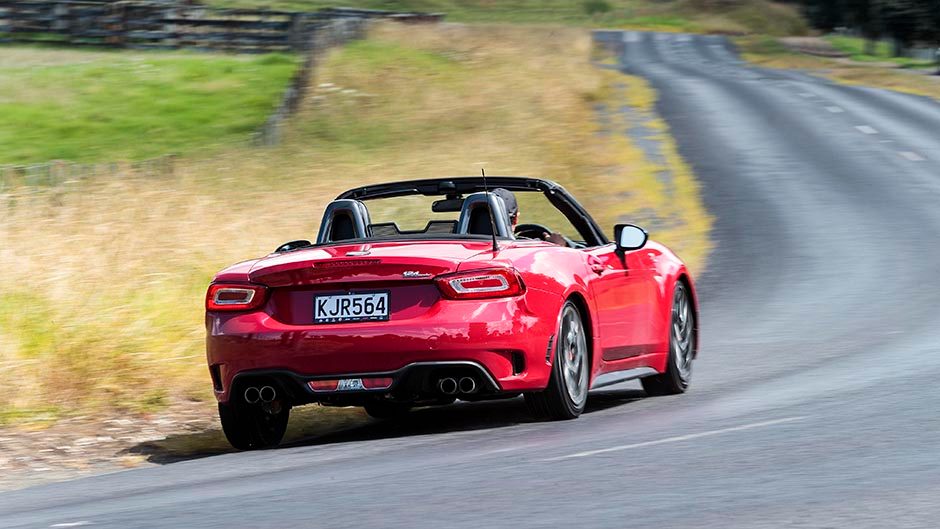
Though like the MX-5, it’s annoying that if you put the roof back on once you’ve turned the car off, the windows automatically drop to help complete the roof operation but then don’t close. The boot is the same small, if not well shaped hole. The Scorpion’s a little noisy on road with mechanical and road buzz, but it is a sports car. Is the Abarth preferable to the MX-5? Some might like the added roll control and the easier midrange, even the look, and that it’s still a satisfying drive means we can’t not recommend it, if you think it more for you than the MX-5.
But we do prefer the charms of Mazda’s naturally aspirated engine, along with its more supple suspension tune. And then there’s the price, the Abarth is $53k for the manual and the MX-5 Limited is $47k.
| Model | Abarth 124 Spider | Price | $52,990 |
| Engine | 1368cc, IL4, T/DI, 125kW/250Nm | Drivetrain | 6-speed manual, rear-wheel drive |
| Fuel Use | 6.4L/100km | C02 Output | 148g/km |
| 0-100km/h | 6.95sec | Weight | 1085kg |



